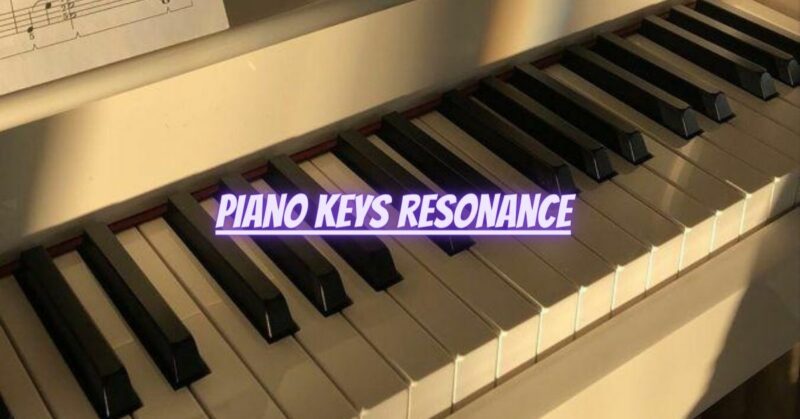Piano keys resonance is a captivating phenomenon that breathes life into the music produced on the instrument. It is the natural vibration and reverberation of the piano strings and soundboard in response to the pianist’s touch on the keys. This unique resonance gives the piano its characteristic warm and expressive sound, making it a beloved instrument in the world of music. In this article, we will delve into the significance of piano keys resonance, how it enhances the musical experience, and the art of harnessing its power.
1. Understanding Piano Keys Resonance:
When a pianist presses a key, the corresponding hammer strikes the piano string, producing sound vibrations. These vibrations transfer to the soundboard, which amplifies and sustains the sound, creating the characteristic resonance of the piano.
2. Enhancing Sound Depth:
Piano keys resonance enriches the sound by adding depth and complexity. The vibrations from one key can influence nearby strings, creating a harmonious blend of tones that fill the room with a captivating musical aura.
3. Sustaining Tones:
The resonance of the piano strings and soundboard allows the sound to linger in the air, providing a sustained quality to the notes. This sustained sound enables the pianist to connect phrases and create seamless musical lines.
4. Harmonic Overtones:
Piano keys resonance brings out harmonic overtones, enriching the overall sound. These subtle additional tones add color and character to the music, enhancing its expressive qualities.
5. Sympathetic Resonance:
Sympathetic resonance occurs when a non-played string vibrates in response to the vibrations of a played string. This effect contributes to the piano’s lush and immersive sound.
6. Chordal Expression:
Piano keys resonance allows for beautiful chordal expression. When multiple keys are played together, their vibrations interact, creating a sumptuous blend of tones that elevates the musical experience.
7. Utilizing the Sustain Pedal:
The sustain pedal plays a significant role in enhancing piano keys resonance. When pressed, it lifts the dampers from the strings, allowing them to vibrate freely and enhancing the sustain and resonance of the sound.
8. Expressive Playing Techniques:
Pianists can utilize expressive playing techniques to harness piano keys resonance effectively. Varying touch, dynamics, and pedaling can shape the resonance to fit the musical context and desired emotional impact.
9. Musical Interpretation:
Understanding piano keys resonance aids pianists in interpreting music. They can use resonance to emphasize certain passages, create contrast, and evoke specific emotions in their performance.
10. Embracing the Magic of Resonance:
Piano keys resonance is a magical aspect of piano playing that adds a unique depth to the music. As pianists explore this resonance, they become attuned to the instrument’s voice and unlock new levels of expression in their musical journey.
Conclusion:
Piano keys resonance is an enchanting force that brings life and soul to the piano’s sound. It allows the instrument to sing, dance, and evoke emotions in a way that captivates both performers and listeners. By embracing the magic of resonance, pianists can unlock the full expressive potential of the piano and create musical moments that linger in the hearts of audiences. Let piano keys resonance be the key that opens the door to a world of musical expression, and let your fingers dance upon the keys to unleash the richness of sound that the piano holds. Happy playing!


